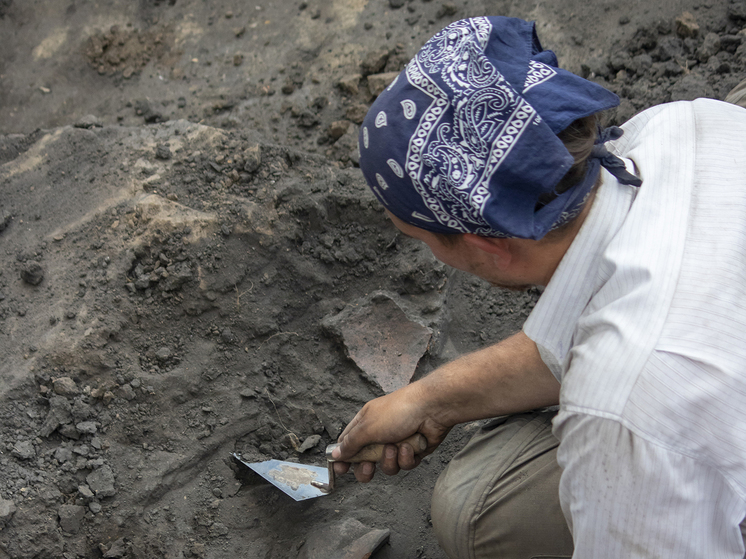Scientists called the find unique
A “rare and exciting” 1,700-year-old artifact was found in England's Berryfields. Scientists were surprised that in the egg found, the liquid white and yolk were preserved in their original form. Archaeologists believe that this could have been influenced by the location of the artifact.

A new study finds that an egg dating back to Roman times still retains a runny yolk and white inside undamaged. The artifact was found in a swampy hole about 4 centimeters wide. This, scientists believe, contributed to the egg's incredible preservation.
DGB Conservation archaeologist Dana Goodburn-Brown carried out a micro-CT scan of the egg, which confirmed it was still full of fluid and had air bubbles.
< p>«It was an exciting moment when we first saw the air bubble inside and then decided to turn the egg and look again to see if the bubble would move, which it did,» she told the Daily Mail.
“We decided that it was best not to undertake any invasive methods to study the egg because it is very rare and its contents may have great scientific value. Eggshells are porous, and anything that gets on the surface of the eggshell can also contaminate the internal contents,” the archaeologist said.
Eggshells have previously been found in other places of ancient Roman life in what is now Great Britain. However, it has never been possible to take possession of a whole and undamaged egg. Not to mention an egg with liquid preserved inside.
The valuable egg was one of four discovered during excavations at Berryfields between 2007 and 2016 before the construction of a new housing estate. They were part of an «extraordinary» collection of objects that also included a wicker basket, ceramic vessels, coins, leather shoes and animal bones. However, three eggs broke, generously endowing archaeologists with a strong smell of rotten meat. Those present described it as “unforgettable” and “incredibly sulphurous.”
According to Goodburn-Brown, the egg was most likely preserved by being submerged in a flooded pit: “Organic materials and liquids generally do not survive in the depths of time, except in special circumstances, such as being sealed by clay or mud and lack of oxygen circulation. Waterlogging at an archaeological site in Buckinghamshire has preserved the eggs intact, as well as the nearby remains of a fragile wooden basket.»
Oxford Archaeology, which oversaw the excavation, said someone may have placed the eggs into the basket and into the Roman well in anticipation of good luck. The place turned out to be very similar to today's “wishing wells.”
In Roman society, eggs symbolized fertility and rebirth, so they may have been connected in some way to another object placed there at the same time.
The egg was recently taken to London's Natural History Museum for an expert opinion from Douglas Russell, the museum's senior curator of birds' eggs and nests.
Russell confirmed that the «fascinating» and «possibly unique» object was likely «unintentionally preserved due to the soil conditions in which it was found «.
“There are older eggs with intact contents. However, this is the oldest unintentionally preserved bird egg I have ever seen. This makes it unique. Going forward, it will be very interesting to see if we can use any of the advanced imaging and analysis techniques available here to shed further light on which species laid eggs and their potential archaeological significance,” said Douglas Russell.< /p>
Researchers are now trying to extract the liquid contents from the egg without breaking the shell, although exactly how this will be done is a big question. One option would be to make a thin cut in the shell to drain the contents.
“It's a bit like blowing an egg — but obviously it's a much more delicate process. There is huge potential for further scientific research and this is the next stage in the life of this remarkable egg,” Edward Biddulph, senior project manager at Oxford Archeology, spoke to the BBC.
























































Свежие комментарии